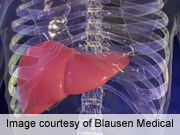Article
Tenofovir Monotherapy Effective in Lamivudine-resistant Chronic Hepatitis B
Author(s):
Study results presented at The Liver Meeting (2012 AASLD annual meeting) show that treatment with tenofovir disoproxil difumarate is safe and effective in this patient population.

Tenofovir disoproxil difumarate (tenofovir DF) is effective in chronic hepatitis B patients who are resistant to lamivudine, according to research presented at the The Liver Meeting, the 63rd Annual Meeting of the American Association for the Study of Liver Diseases (AASLD). There was no extra benefit from combination treatment with FTC (emtricitabine).
Nearly 90% of patients receiving either TDF or TDF/FTC had their hepatitis B virus (HBV) titers lowered to less than 400 copies per mL over two years, and treatment was safe, according to lead investigator Scott Fung, MD, of Toronto General Hospital in Toronto, Canada.
“Lamivudine is widely used throughout the world as a first-line therapy,” said Fung. However, he also said that up to 70% of patients develop resistance after five years of use. Tenofovir DF is a potent nucleotide reverse transcriptase inhibitor, and has demonstrated excellent efficacy and safety in treatment-naive, but not treatment-resistant, chronic HBV patients.
In the current trial, 280 lamivudine-resistant and viremic patients were randomized 1 to 1 to TDF or TDF/FTC for what is intended to be a five-year long study. Fung reported that about 90% of patients in each group have completed two years of treatment. The mean age of patients was 47 years, 75% were males, and 34% were of Asian ancestry. HBV genotype D was the most common type, followed by A, C, and B, with no differences between groups.
According to Fung, the main finding from the 96-week interim analysis is that both groups achieved viral reduction to less than 400 units of HBV, with no difference between the groups. Similarly, there were no differences between groups in loss of HB e-antigen or HB e-antigen seroconversion, or HB s-antigen loss. About 70% of both groups had normal levels of ALT.
Both treatments were well-tolerated, with only 1% of patients discontinuing due to an adverse event, said Fung. No patients had an increase in serum creatinine of over 0.5 mg/dL, and 1% had serum phosphorous of less than 2 mg/dL. While 3% had creatinine clearance below 50 mL/minute, the baseline range for these 9 patients was between 49 and 61, suggesting the impact from treatment was minor at most. No clinically relevant bone mineral loss was observed. Isolates of the virus from a small number of patients in each group indicated it remained sensitive to tenofovir.
“Treatment was safe and well tolerated,” Fung concluded. Furthermore, he said, “similar efficacy between the mono- and combination therapy arms supports the use of TDF monotherapy in this population.”




